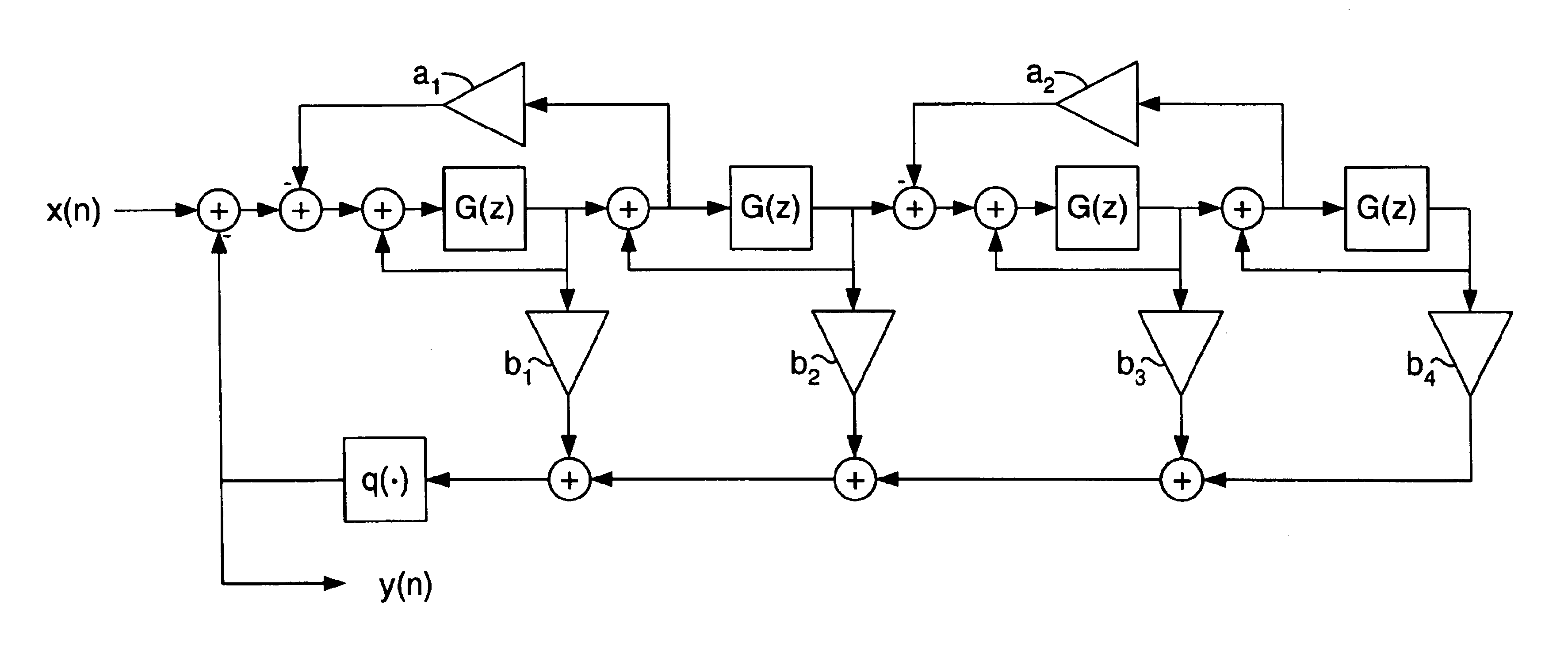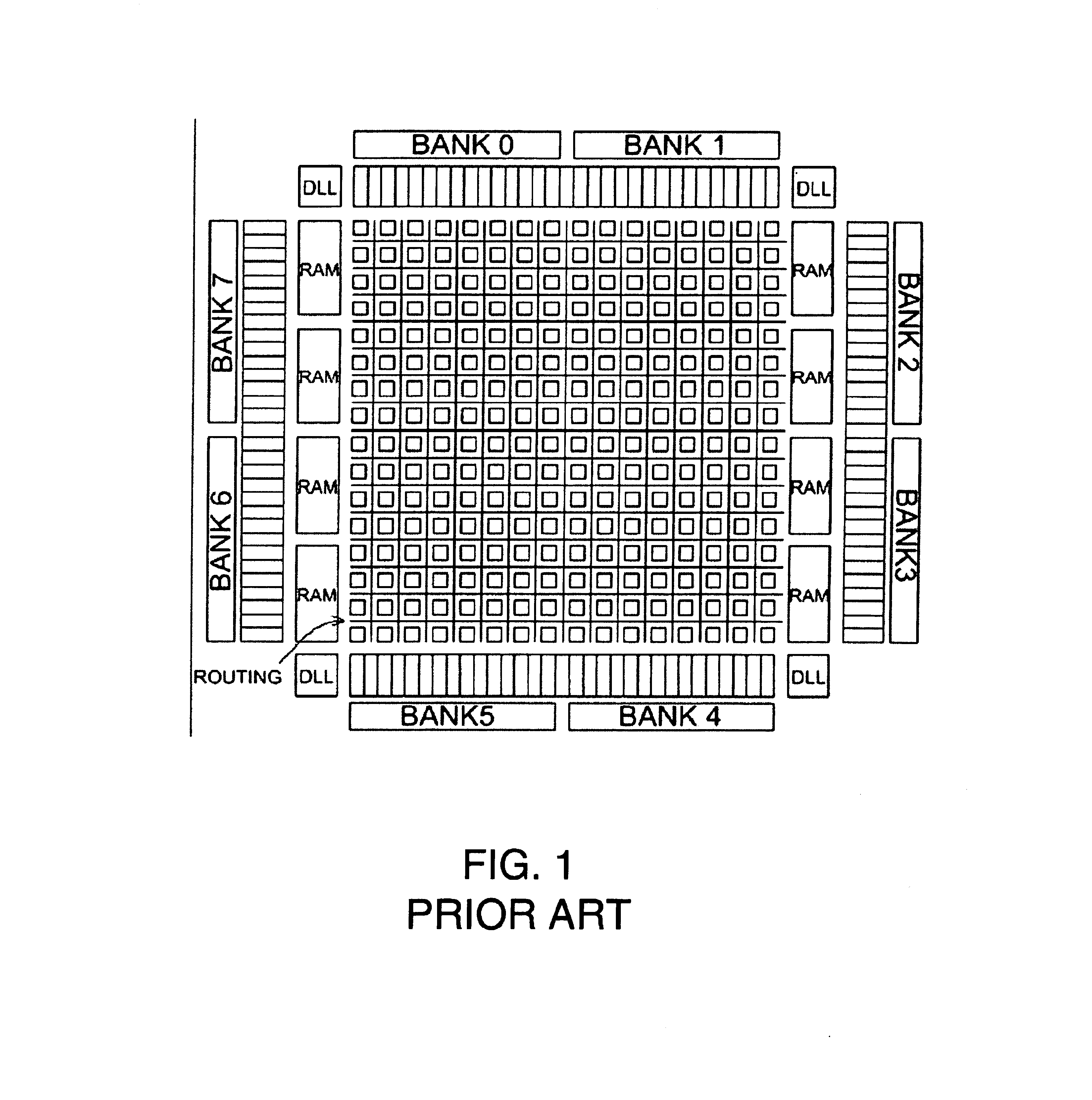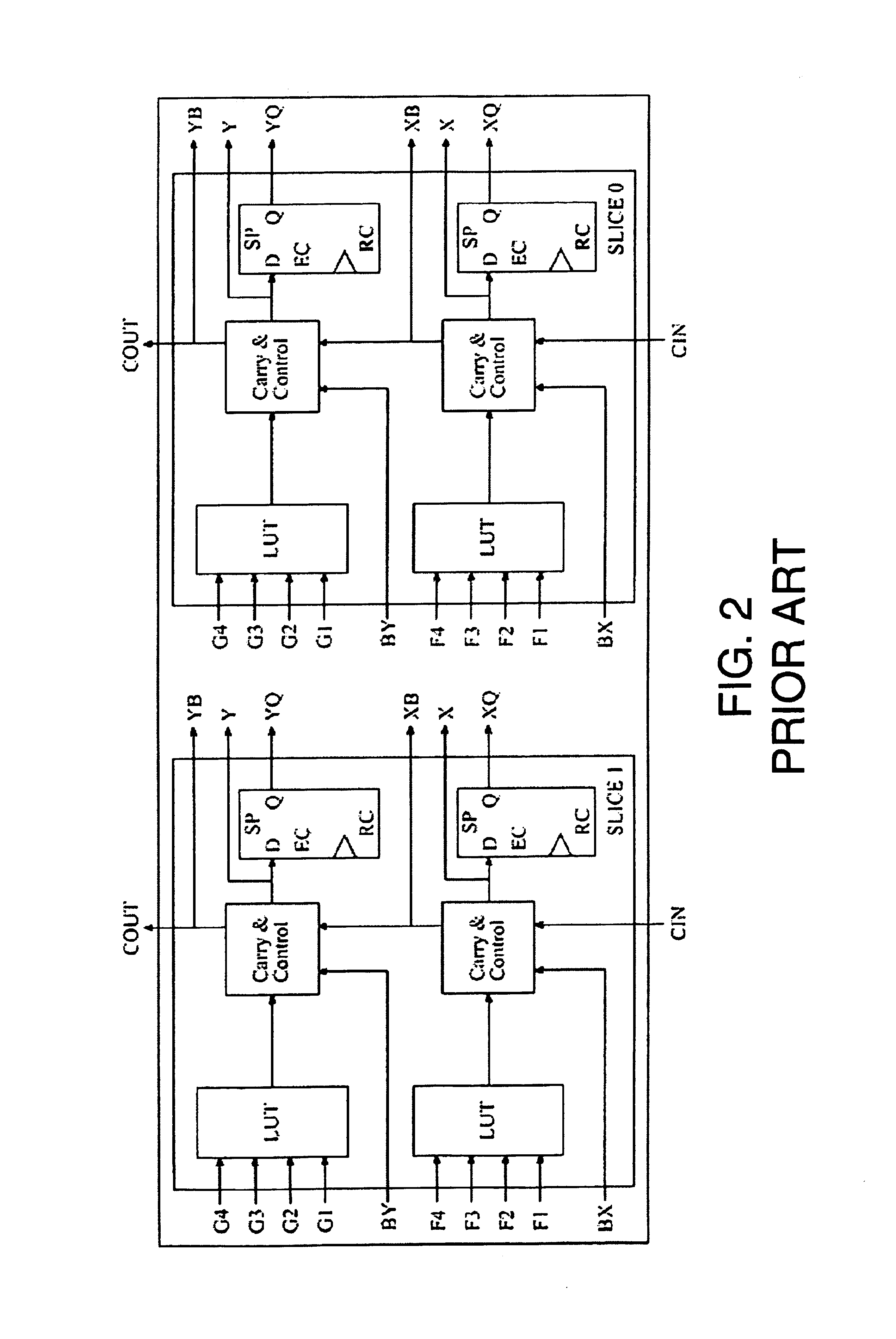Tunable narrow-band filter including sigma-delta modulator
a narrowband filter and modulator technology, applied in the field of m, can solve the problems of complex optimization algorithms implemented using fpgas, not being practical and achieving the flexibility of a building block that is generic enough to provide a broad market, and being generic enough to cover a broad market cross-section
- Summary
- Abstract
- Description
- Claims
- Application Information
AI Technical Summary
Benefits of technology
Problems solved by technology
Method used
Image
Examples
Embodiment Construction
To provide a frame of reference for the ΣΔ decimator, consider an implementation that does not pre-process the input data, but just applies it directly to a polyphase decimation filter. A complex filter processing real-valued data consumes double the FPGA resources of a filter with real weights. For N=160, 15344 CLBs are required. This Figure is based on a cost of 40 CLBs for each KCM and 8 CLBs for an add-delay component.
Now consider the logic accounting for the dual modulator approach. The area cost Γ() for this filter is
Γ()=2δ(ΣΔ)+Γ())+Γ(ACC—z−1) Equation 22
where ΓΣΔ represents the logic requirements for one ΣΔ modulator, and Γ() is the logic needed for a reduced precision multiplier. Using the filter specifications defined earlier, and 18-tap error prediction filters,
Γ()=2×738+2×((160+159)×8)=6596.
Comparing the area requirements of the two options produces the ratio λ=Γ(F I R)^Γ F I R=6596 / 15344≈43%Equation 23
So for this example, the re-quantization approach has ...
PUM
 Login to View More
Login to View More Abstract
Description
Claims
Application Information
 Login to View More
Login to View More - R&D
- Intellectual Property
- Life Sciences
- Materials
- Tech Scout
- Unparalleled Data Quality
- Higher Quality Content
- 60% Fewer Hallucinations
Browse by: Latest US Patents, China's latest patents, Technical Efficacy Thesaurus, Application Domain, Technology Topic, Popular Technical Reports.
© 2025 PatSnap. All rights reserved.Legal|Privacy policy|Modern Slavery Act Transparency Statement|Sitemap|About US| Contact US: help@patsnap.com



